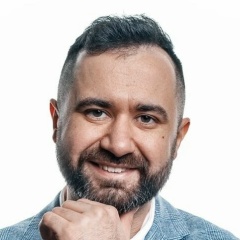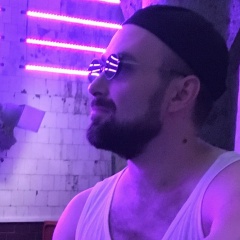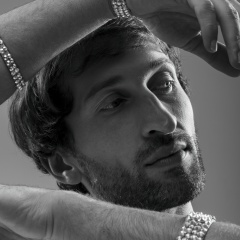Обычно, когда заходит речь об архитектурных потерях Москвы XX века, вспоминают Сухареву башню, стены и башни Китай-города, храм Спаса на Бору, Красные ворота. Но были в Москве и другие шедевры, которые ныне утрачены.
Еще одной потерянной архитектурной жемчужиной Москвы является церковь Николая Чудотворца «Большой крест», построенная в конце 17 века купцами и промышленниками братьями Филатьевыми. Филатьевы были родом из Архангельска. Свое огромное состояние отец и сыновья Филатьевы заработали на продаже заграницу, добываемых в Сибири мехов и моржовых клыков. В Россию они напротив ввозили и продавали иноземные товары. Кроме того, Филатьевы владели богатейшим соляным промыслом в Соликамском уезде и торговали этим востребованным товаром по Каме, Волге, Оке. При царе Алексее Михайловиче и регентстве царевны Софьи торговая империя Филатьевых достигает своего расцвета. Братья перебираются в Москву и в 1680г. закладывают церковь, на строительство которой средств не жалеют и которую мыслят, как будущую семейную усыпальницу. Церковь получилась необыкновенной. На тот момент она была одним из самых высоких зданий Москвы. В церкви было много света, вся она была богато украшена белым резным камнем. Церковь получилось очень русской по духу. В ней органично сочеталось несочитаемое. Это была симфония из дорических, коринфских и витых колонн, пилястр, раковин, кокошников, закомар, белокаменных узорных рам и наличников, обрамлявших прямоугольные и восьмигранные окна… В последствии подобный стиль получил наименование Строгановского барокко. ( Не могу не отметить, что Григорий Дмитриевич Строганов не только наследовал целый архитектурный стиль, но также Петр I передал Г.Д.Строганову соляной промысел купцов Филатьевых). К сожалению, имя зодчего, воздвигшего данное архитектурное чудо, остается неизвестным. Предполагают, то автором постройки мог быть Петр Потапов…, Яков Бухвостов…
Внутри своей церкви братья поместили копию Кийского креста с мощами 156 святых. На тот момент, в Москве подобных реликвий не существовало. (Здесь нужно пару слов сказать о Кийском кресте. Патриарх Никон отличался сильными символическими поступками. В 1939г. будучи еще иеромонахом, во время побега из Соловецкого монастыря Никон терпит кораблекрушение и чудом спасается, выбравший на скалы Кий-острова. Много лет спустя, став патриархом он основывает на острове монастырь во имя Воздвижения Креста Господня и велит изготовить крест, равный по размеру Кресту Распятия и наполняет его мощами 300 святых и всевозможными реликвиями. До Никона крестов равных Кресту Распятия не делали. Сегодня Кийский крест находится в Москве в храме преподобного Сергия Радонежского в Крапивниках.) Также в храме находилась икона Всех Святых, написанная в 1700г. Кириллом Улановым. Как она выглядела можно попробовать представить, зайдя в церковь в Филях, где в целости сохранился золоченый резной иконостас и где находится, написанная Кириллом Улановым в барочном стиле, икона Успения Богородицы с множеством миниатюрных клейм. Сам иконостас церкви Николая Чудотворца «Большой крест» тоже сохранился и, в настоящее время, находится в трапезной Троице-Сергиевой лавры.
Судьба к церкви Николая Чудотворца «Большой крест» оказалась безжалостна. Служивший в ней отец Михаил Любимов выступил решительно против, вышедшей в 1927 году Декларации митрополита Сергия, примиряющей верующих с Советской властью, и отказался признать Сергия Патриаршим Местопблюстителем. Церковь Николая Чудотворца «Большой крест» стала центром московского движения «непоминающих». Исповедоваться и причащаться к отцу М.И.Любимову приезжали несогласные, не только со всей Москвы, но и из других городов. Деятельность прихода очень скоро приобрела политическую окраску и во второй половине 1931 года власти церковь закрыли. Церковная община приняла решение продолжить литургическую жизнь, собираясь на частных квартирах, где, в том числе, молились за арестованных. Весной 1932 года отец Михаил Любимов и ряд его прихожан были взяты по «Делу епископа Серафими (Звездинского)» об организации подпольной Истинно Православной Церкви. В 1933 году власти города разобрали церковное крыльцо по причине того, что оно выходит на тротуар и мешает пешеходному движению, а затем и саму опустевшую церковь.
В настоящий момент фрагменты белокаменного узорочья церкви Николая Чудотворца «Большой Крест» можно увидеть в коллекции музея Коломенское. Создатель музея Коломенское архитектор и реставратор Петр Дмитриевич Барановский по роду своей деятельности занимался обмером и описанием, намеченных к сносу церквей. Спасти саму церковь он естественно не смог, но мы обязаны ему тем, что накануне своего ареста он смог вывезти и сохранить образцы удивительного белокаменного убранства церкви.
Еще одной потерянной архитектурной жемчужиной Москвы является церковь Николая Чудотворца «Большой крест», построенная в конце 17 века купцами и промышленниками братьями Филатьевыми. Филатьевы были родом из Архангельска. Свое огромное состояние отец и сыновья Филатьевы заработали на продаже заграницу, добываемых в Сибири мехов и моржовых клыков. В Россию они напротив ввозили и продавали иноземные товары. Кроме того, Филатьевы владели богатейшим соляным промыслом в Соликамском уезде и торговали этим востребованным товаром по Каме, Волге, Оке. При царе Алексее Михайловиче и регентстве царевны Софьи торговая империя Филатьевых достигает своего расцвета. Братья перебираются в Москву и в 1680г. закладывают церковь, на строительство которой средств не жалеют и которую мыслят, как будущую семейную усыпальницу. Церковь получилась необыкновенной. На тот момент она была одним из самых высоких зданий Москвы. В церкви было много света, вся она была богато украшена белым резным камнем. Церковь получилось очень русской по духу. В ней органично сочеталось несочитаемое. Это была симфония из дорических, коринфских и витых колонн, пилястр, раковин, кокошников, закомар, белокаменных узорных рам и наличников, обрамлявших прямоугольные и восьмигранные окна… В последствии подобный стиль получил наименование Строгановского барокко. ( Не могу не отметить, что Григорий Дмитриевич Строганов не только наследовал целый архитектурный стиль, но также Петр I передал Г.Д.Строганову соляной промысел купцов Филатьевых). К сожалению, имя зодчего, воздвигшего данное архитектурное чудо, остается неизвестным. Предполагают, то автором постройки мог быть Петр Потапов…, Яков Бухвостов…
Внутри своей церкви братья поместили копию Кийского креста с мощами 156 святых. На тот момент, в Москве подобных реликвий не существовало. (Здесь нужно пару слов сказать о Кийском кресте. Патриарх Никон отличался сильными символическими поступками. В 1939г. будучи еще иеромонахом, во время побега из Соловецкого монастыря Никон терпит кораблекрушение и чудом спасается, выбравший на скалы Кий-острова. Много лет спустя, став патриархом он основывает на острове монастырь во имя Воздвижения Креста Господня и велит изготовить крест, равный по размеру Кресту Распятия и наполняет его мощами 300 святых и всевозможными реликвиями. До Никона крестов равных Кресту Распятия не делали. Сегодня Кийский крест находится в Москве в храме преподобного Сергия Радонежского в Крапивниках.) Также в храме находилась икона Всех Святых, написанная в 1700г. Кириллом Улановым. Как она выглядела можно попробовать представить, зайдя в церковь в Филях, где в целости сохранился золоченый резной иконостас и где находится, написанная Кириллом Улановым в барочном стиле, икона Успения Богородицы с множеством миниатюрных клейм. Сам иконостас церкви Николая Чудотворца «Большой крест» тоже сохранился и, в настоящее время, находится в трапезной Троице-Сергиевой лавры.
Судьба к церкви Николая Чудотворца «Большой крест» оказалась безжалостна. Служивший в ней отец Михаил Любимов выступил решительно против, вышедшей в 1927 году Декларации митрополита Сергия, примиряющей верующих с Советской властью, и отказался признать Сергия Патриаршим Местопблюстителем. Церковь Николая Чудотворца «Большой крест» стала центром московского движения «непоминающих». Исповедоваться и причащаться к отцу М.И.Любимову приезжали несогласные, не только со всей Москвы, но и из других городов. Деятельность прихода очень скоро приобрела политическую окраску и во второй половине 1931 года власти церковь закрыли. Церковная община приняла решение продолжить литургическую жизнь, собираясь на частных квартирах, где, в том числе, молились за арестованных. Весной 1932 года отец Михаил Любимов и ряд его прихожан были взяты по «Делу епископа Серафими (Звездинского)» об организации подпольной Истинно Православной Церкви. В 1933 году власти города разобрали церковное крыльцо по причине того, что оно выходит на тротуар и мешает пешеходному движению, а затем и саму опустевшую церковь.
В настоящий момент фрагменты белокаменного узорочья церкви Николая Чудотворца «Большой Крест» можно увидеть в коллекции музея Коломенское. Создатель музея Коломенское архитектор и реставратор Петр Дмитриевич Барановский по роду своей деятельности занимался обмером и описанием, намеченных к сносу церквей. Спасти саму церковь он естественно не смог, но мы обязаны ему тем, что накануне своего ареста он смог вывезти и сохранить образцы удивительного белокаменного убранства церкви.
Usually, when it comes to the architectural losses of Moscow in the 20th century, they recall the Sukharev Tower, the walls and towers of Kitay-Gorod, the Church of the Savior on Bor, the Red Gate. But there were also other masterpieces in Moscow that have now been lost.
Another lost architectural gem of Moscow is the Great Cross Church of Nicholas the Wonderworker, built in the late 17th century by the Filatyev brothers, merchants and industrialists. The Filatievs were from Arkhangelsk. The Filatyevs' father and sons earned their huge fortune by selling furs and walrus tusks, mined in Siberia, abroad. On the contrary, they imported and sold foreign goods to Russia. In addition, the Filatyevs owned the richest salt industry in the Solikamsk district and traded this demanded product along the Kama, Volga, Oka. Under Tsar Alexei Mikhailovich and the regency of Tsarevna Sophia, the Filatyevs' trading empire reached its peak. The brothers moved to Moscow and in 1680. they lay a church, for the construction of which they do not spare funds and which they think of as a future family tomb. The church turned out to be extraordinary. At that time, it was one of the tallest buildings in Moscow. There was a lot of light in the church, all of it was richly decorated with white carved stone. The church turned out to be very Russian in spirit. It organically combined the incomprehensible. It was a symphony of Doric, Corinthian and twisted columns, pilasters, shells, kokoshniks, zakomars, patterned white-stone frames and platbands that framed rectangular and octagonal windows ... Later, this style was called the Stroganov Baroque. (I cannot but note that Grigory Dmitrievich Stroganov not only inherited the whole architectural style, but also Peter I transferred to GD Stroganov the salt industry of the Filatyev merchants). Unfortunately, the name of the architect who erected this architectural wonder remains unknown. It is believed that the author of the construction could have been Peter Potapov ..., Yakov Bukhvostov ...
Inside their church, the brothers placed a copy of the Kyi cross with the relics of 156 saints. At that time, such relics did not exist in Moscow. (A few words should be said here about the Kiiskiy cross. Patriarch Nikon was distinguished by strong symbolic deeds. In 1939, while still a hieromonk, during his escape from the Solovetskiy Monastery, Nikon was shipwrecked and miraculously saved, having chosen Kiy-Island on the rocks. Many years later, becoming patriarch he founds on the island a monastery in the name of the Exaltation of the Cross of the Lord and orders to make a cross equal in size to the Cross of the Crucifixion and fills it with the relics of 300 saints and all kinds of relics. in Krapivniki.) Also in the temple there was an icon of All Saints, written in 1700. Kirill Ulanov. You can try to imagine how she looked by going to the church in Fili, where the gilded carved iconostasis has been preserved intact and where the icon of the Assumption of the Virgin with many miniature brands, painted by Kirill Ulanov in the Baroque style, is located. The iconostasis of the Church of St. Nicholas the Wonderworker "Big Cross" itself has also been preserved and, at present, is located in the refectory of the Trinity-Sergius Lavra.
The fate of the Church of St. Nicholas the Wonderworker "Big Cross" was ruthless. Father Mikhail Lyubimov, who served in it, strongly opposed the 1927 Declaration of Metropolitan Sergius, which reconciles believers with the Soviet regime, and refused to recognize Sergius as Patriarchal Locum Tenens. The Church of Nicholas the Wonderworker "Big Cross" became the center of the Moscow movement of the "non-remembering". Dissenters came to confess and receive communion with Father M.I. Lyubimov, not only from all over Moscow, but also from other cities. The activity of the parish very soon acquired a political connotation, and in the second half of 1931 the authorities closed the church. The church community decided to continue the liturgical life, gathering in private apartments, where, among other things, they prayed for those arrested. In the spring of 1932, Fr. Mikhail Lyubimov and a number of his parishioners were taken over in the "Case of Bishop Seraphim (Zvezdinsky)" about the organization of an underground True Orthodox Church. In 1933, the city authorities dismantled the church porch due to the fact that it opens onto the sidewalk and interferes with pedestrian traffic, and then the empty church itself.
At the moment, fragments of the white-stone patterned church of St. Nicholas the Wonderworker "Big Cross" can be seen in the collection of the Kolomenskoye Museum. The founder of the Kolomenskoye museum, the architect and restorer Pyotr Dmitrievich Baranovsky, by the nature of his work, was engaged in measuring and describing churches that were slated for demolition. Naturally, he could not save the church itself, but we owe him the fact that on the eve of his arrest he was able to take out and keep samples of the amazing white-stone decoration of the church.
Another lost architectural gem of Moscow is the Great Cross Church of Nicholas the Wonderworker, built in the late 17th century by the Filatyev brothers, merchants and industrialists. The Filatievs were from Arkhangelsk. The Filatyevs' father and sons earned their huge fortune by selling furs and walrus tusks, mined in Siberia, abroad. On the contrary, they imported and sold foreign goods to Russia. In addition, the Filatyevs owned the richest salt industry in the Solikamsk district and traded this demanded product along the Kama, Volga, Oka. Under Tsar Alexei Mikhailovich and the regency of Tsarevna Sophia, the Filatyevs' trading empire reached its peak. The brothers moved to Moscow and in 1680. they lay a church, for the construction of which they do not spare funds and which they think of as a future family tomb. The church turned out to be extraordinary. At that time, it was one of the tallest buildings in Moscow. There was a lot of light in the church, all of it was richly decorated with white carved stone. The church turned out to be very Russian in spirit. It organically combined the incomprehensible. It was a symphony of Doric, Corinthian and twisted columns, pilasters, shells, kokoshniks, zakomars, patterned white-stone frames and platbands that framed rectangular and octagonal windows ... Later, this style was called the Stroganov Baroque. (I cannot but note that Grigory Dmitrievich Stroganov not only inherited the whole architectural style, but also Peter I transferred to GD Stroganov the salt industry of the Filatyev merchants). Unfortunately, the name of the architect who erected this architectural wonder remains unknown. It is believed that the author of the construction could have been Peter Potapov ..., Yakov Bukhvostov ...
Inside their church, the brothers placed a copy of the Kyi cross with the relics of 156 saints. At that time, such relics did not exist in Moscow. (A few words should be said here about the Kiiskiy cross. Patriarch Nikon was distinguished by strong symbolic deeds. In 1939, while still a hieromonk, during his escape from the Solovetskiy Monastery, Nikon was shipwrecked and miraculously saved, having chosen Kiy-Island on the rocks. Many years later, becoming patriarch he founds on the island a monastery in the name of the Exaltation of the Cross of the Lord and orders to make a cross equal in size to the Cross of the Crucifixion and fills it with the relics of 300 saints and all kinds of relics. in Krapivniki.) Also in the temple there was an icon of All Saints, written in 1700. Kirill Ulanov. You can try to imagine how she looked by going to the church in Fili, where the gilded carved iconostasis has been preserved intact and where the icon of the Assumption of the Virgin with many miniature brands, painted by Kirill Ulanov in the Baroque style, is located. The iconostasis of the Church of St. Nicholas the Wonderworker "Big Cross" itself has also been preserved and, at present, is located in the refectory of the Trinity-Sergius Lavra.
The fate of the Church of St. Nicholas the Wonderworker "Big Cross" was ruthless. Father Mikhail Lyubimov, who served in it, strongly opposed the 1927 Declaration of Metropolitan Sergius, which reconciles believers with the Soviet regime, and refused to recognize Sergius as Patriarchal Locum Tenens. The Church of Nicholas the Wonderworker "Big Cross" became the center of the Moscow movement of the "non-remembering". Dissenters came to confess and receive communion with Father M.I. Lyubimov, not only from all over Moscow, but also from other cities. The activity of the parish very soon acquired a political connotation, and in the second half of 1931 the authorities closed the church. The church community decided to continue the liturgical life, gathering in private apartments, where, among other things, they prayed for those arrested. In the spring of 1932, Fr. Mikhail Lyubimov and a number of his parishioners were taken over in the "Case of Bishop Seraphim (Zvezdinsky)" about the organization of an underground True Orthodox Church. In 1933, the city authorities dismantled the church porch due to the fact that it opens onto the sidewalk and interferes with pedestrian traffic, and then the empty church itself.
At the moment, fragments of the white-stone patterned church of St. Nicholas the Wonderworker "Big Cross" can be seen in the collection of the Kolomenskoye Museum. The founder of the Kolomenskoye museum, the architect and restorer Pyotr Dmitrievich Baranovsky, by the nature of his work, was engaged in measuring and describing churches that were slated for demolition. Naturally, he could not save the church itself, but we owe him the fact that on the eve of his arrest he was able to take out and keep samples of the amazing white-stone decoration of the church.










У записи 9 лайков,
0 репостов.
0 репостов.
Эту запись оставил(а) на своей стене Александр Себров





























